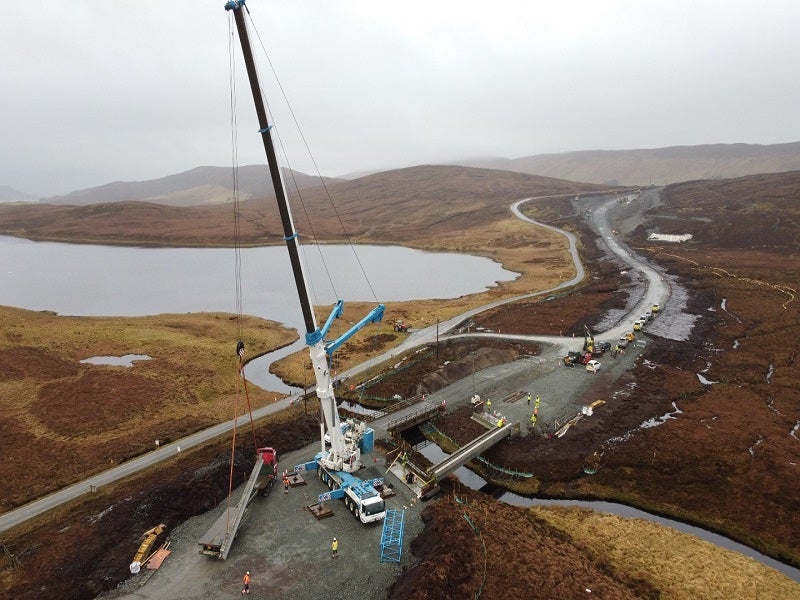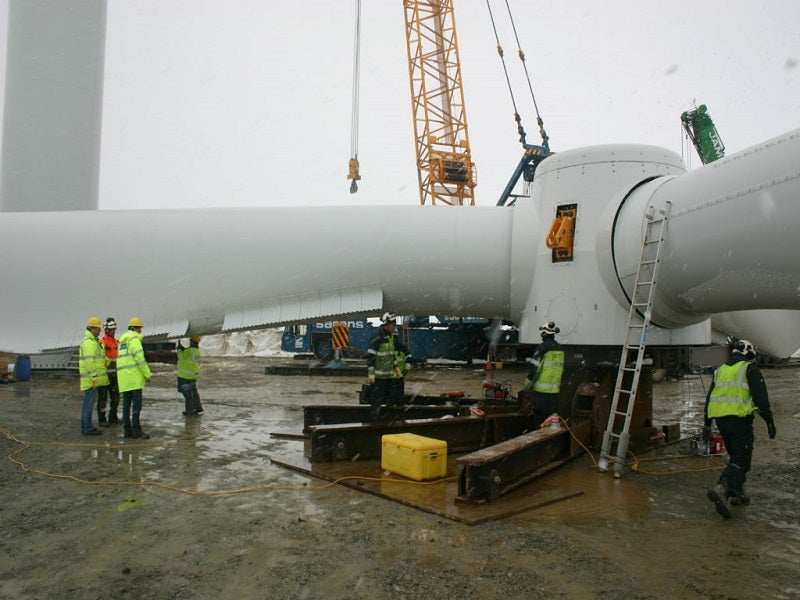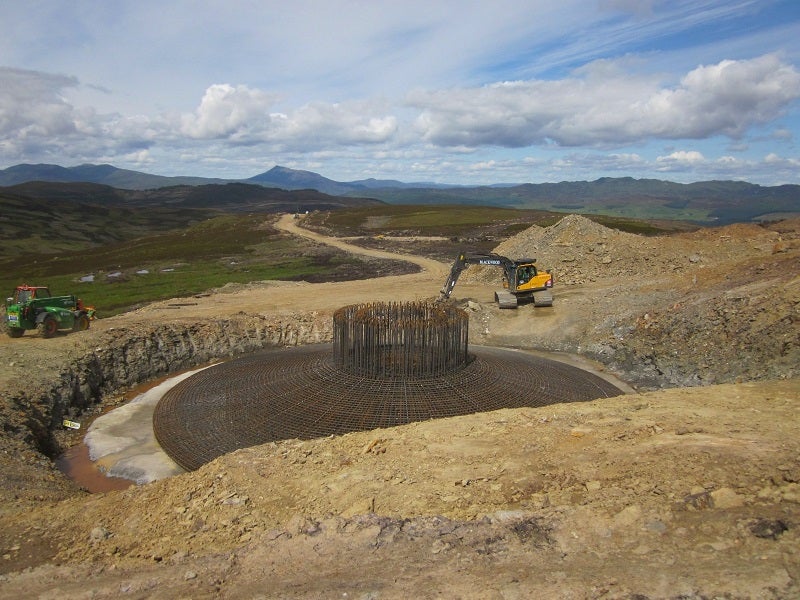The 443MW Viking Energy wind farm is being developed on the Shetland Islands in Scotland, UK, by SSE Renewables, a renewable energy subsidiary of SSE.
Upon completion, the project is expected to be one of the biggest onshore wind farms by output in the UK. With a capacity to generate approximately 2TWh of energy a year, it is estimated to power 475,099 homes a year and offset 500,000tpa of carbon emissions.
The wind farm is expected to be commissioned in late 2024.
Viking Energy wind farm location
The Viking wind farm is being built on the central mainland of Shetland, on a site extending between Scatsta in the north and Weisdale in the south.
The site is divided into four quadrants, namely Delting, Collafirth, Kergord, and Nesting.
Funding of the Viking Energy wind farm
SSE Renewables is investing £580m ($790.6m) in the project. The financial investment decision (FID) was made in June 2020.
Viking Energy wind farm make-up
The wind farm will consist of 103 Vestas V117-4.2 MW turbines, each with an optimised generating capacity of 4.3MW. The turbine is expected to provide high performance and durability to help realise the full potential of the wind farm. The model is designed to withstand extreme wind conditions. Delivery of the first turbine components was completed in February 2023.
Designed for medium to high wind speeds, each turbine has a swept area of 10,751m² (115,722ft²) and a rotor diameter of 117m. The onshore turbine has a blade length of 57.2m, while the cut-in and cut-out wind speeds are 3m/s and 25m/s, respectively.
Construction details
Construction of the project began in August 2020 while concrete was poured for the first turbine at Mid Kame Hills, Shetland Islands, in September 2021. The commencement of the construction works includes road works and site preparation.
The monitoring of environmental mitigation measures is being carried out through the appointment of an independent Ecological Clerk of Works and a Construction Environmental Management Plan (CEMP) has been formed.
Power transmission from the Viking Project
The power generated by the Viking Energy wind farm will be fed into the electricity grid through the 600MW Shetland high-voltage direct current (HVDC) link, which is currently under construction to connect Shetland to the UK mainland via a 260km-long subsea cable.
The HVDC link will be the anchor project for the transmission link, which was approved by the Office of Gas and Electricity Markets (Ofgem), the UK government energy regulator, in July 2020.
The HVDC system will include a 320/132kV substation, an HVDC converter station, and an HVDC switching station, which will be connected to the existing transmission system at Noss Head in Caithness.
Contractors involved
Danish wind turbine maker Vestas was selected as the turbine supplier for the Viking Energy project in August 2020.
In addition to supplying, installing and commissioning the turbines, Vestas is also supplying VestasOnline Business SCADA, a solution that aims to reduce the downtime of the turbines and optimise the production. The company is also expected to provide long-term services to the wind farm once it is operational. Specialist haulier McFadyens is undertaking the deliveries on behalf of Vestas.
Scottish civil engineering company RJ McLeod was awarded the civil construction contract for the wind farm in July 2020.
Ground investigations for the project were conducted by BAM Ritchies, a ground engineering division of the UK-based construction and civil engineering company BAM Nuttall. The investigations were supported by Frank L Johnston, MBEC Environmental Consulting, Lerwick Port Authority, geotechnical consultant Natural Power, helicopter operator PDG Aviation Services, and Headland Archaeology.
An independent planning monitoring officer from Ramboll UK was engaged to support the environmental monitoring process of the project.
Civil engineering firm Tulloch Developments was contracted to build an access track to Upper Kergord in February 2020. The track connects Upper Kergord to the HVDC converter station, which is required for the transmission link to the mainland.
French cable manufacturer Nexans was selected to supply 800km of 33kV underground cables for the wind farm in June 2021. The cables will be used for linking the wind turbine arrays together and exporting the generated power to the main substation. The electricity from the substation will be fed into the interconnector, where it will then be transmitted to the national grid.
FairWind, a wind turbine installation and services provider, was selected as one of the installation partners for the project in January 2023.
Viking Energy wind project background
The Shetland community was previously involved in the development of the wind farm through a joint venture (JV) with SSE.
Shetland Islands Council and SSE signed a partnership agreement for the development of a wind farm in Shetland in 2007. An application for a wind power project with 150 turbines was submitted to the Scottish government in 2009.
The partners filed a revised application to reduce the number of turbines to 103 in 2010. The government approved the same in 2012.
The consent for the wind farm was challenged in court by environmental activists. The legal action was unsuccessful, although it delayed the development of the project for several years.
The developers sought to increase the maximum tip height of the turbines from 145m to 155m in 2018, to enable the deployment of the latest wind turbine models for increased power generation. The application for the increased tip height was approved in May 2019.
SSE gained full ownership of the wind farm in 2019. The community is entitled to receive annual returns on its historic investment in the project, once operational.
Benefits of the Viking Energy wind farm
The project has spent more than £70m ($90m) since construction started in 2020 and has generated up to 400 jobs during the ongoing construction phase, benefitting over 70 companies in the region. The project is expected to generate another 35 full-time local operation and maintenance jobs throughout its lifetime.






